
Migrating from spreadsheets to ActivityInfo for program and global level reporting with the Spotlight Initiative
Learn about the Spotlight Initiative and the migration of their database to ActivityInfo.
Read articles on Humanitarian Coordination. Explore use cases, best practices templates and tips.

Learn about the Spotlight Initiative and the migration of their database to ActivityInfo.
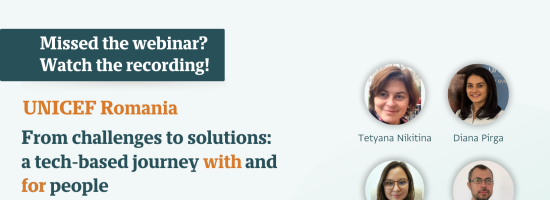
Explore how other organizations design and implement surveys.

Explore how other organizations design and implement surveys.
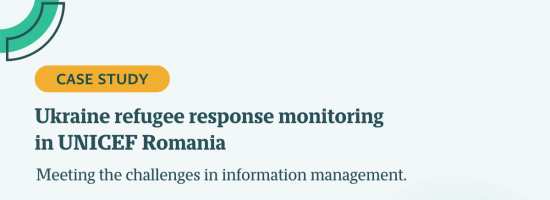
Explore the innovative ways in which UNICEF in Romania leveraged the ActivityInfo platform for the Ukraine refugee response monitoring.
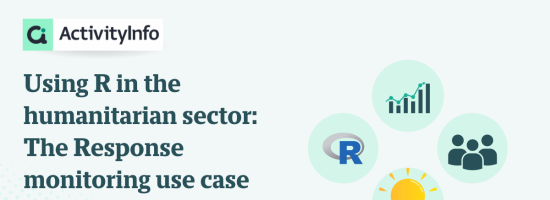
Explore the use of R and the ActivityInfo R package in response monitoring.

In the Ukraine situation, ActivityInfo is supporting the IM needs of key UN and NGO actors both inside and outside the country, recently adding support for Ukrainian, Romanian, Hungarian, Polish and Slovak.
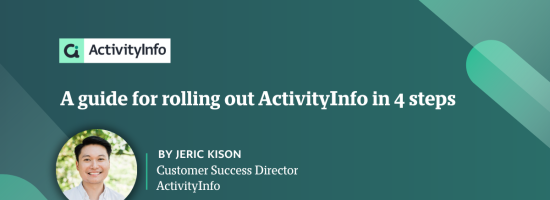
In this article, we present 4 steps along with recommended key tasks to help you roll out ActivityInfo or any other new system in your organization.
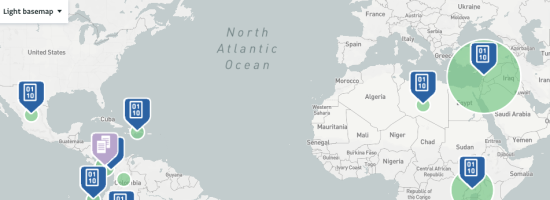
Highlights from the work of information management teams from UNHCR, IOM and UNOCHA. Explore their work on monitoring the Humanitarian Response in Lebanon, Uganda, Libya and in 17 countries working on the Response for Venezuela and get some inspiration for your 2022 response monitoring planning.
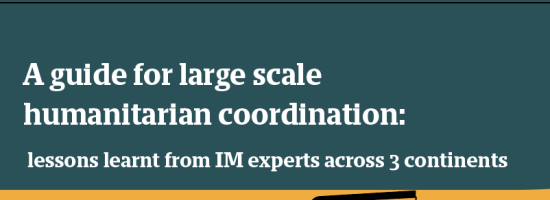
Database structures, information products and lessons learnt from some of the largest deployments of ActivityInfo in humanitarian coordination.
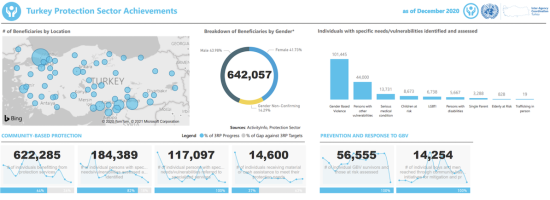
Learn how ActivityInfo can support the coordination and monitoring of activities related to the Protection, Child Protection and Gender-Based Violence sector/cluster.
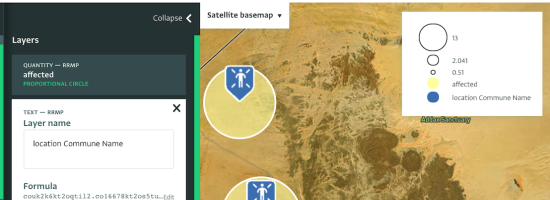
Learn how ActivityInfo can support RRMPs and enhance emergency response data management.
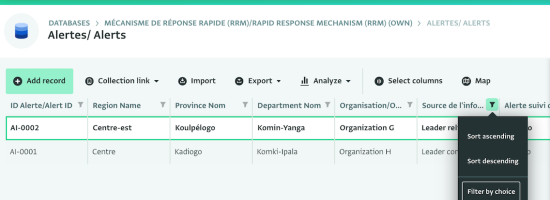
Manage data related to a Rapid Response. Collect alert reports, run and monitor interventions and conduct an evaluation and a post-intervention follow up.
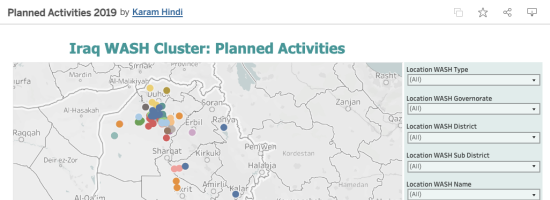
Since its first day, more than 11 years ago, organizations use ActivityInfo to monitor Partner’s presence and response activities, KPIs, 3Ws, 4Ws and 5Ws and many more. In this article, we have gathered resources and tips to help you understand how ActivityInfo supports reporting for the WASH Cluster.

Respond to an IDP crisis with site assessments, NFI distributions, and voucher faires.
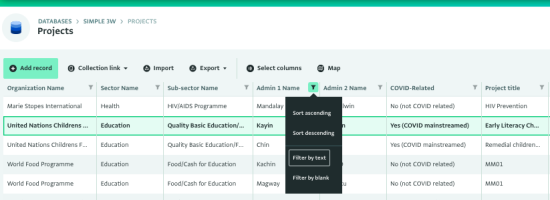
Simple Who's Doing What Where (3W) template identify the actors that are responding to a humanitarian situation, the sectors they are working in, and where.
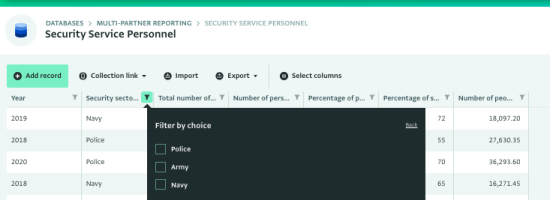
Collect periodic updates from multiple partners working together on a single programme

Since its first day, more than 11 years ago, ActivityInfo has been used to support the coordination and reporting activities of large multi-partnered programmes, information management working groups and cluster/sector activities. In this article, we have gathered resources and tips to help you understand how ActivityInfo supports reporting for the Shelter Cluster.
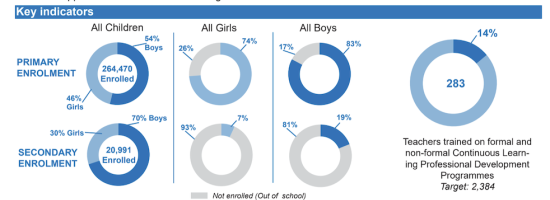
UNHCR adopted ActivityInfo in the region to bring together the diverse reporting activities of the regional and country offices. It was selected because it was flexible, quick to deploy and easy to learn.

Despite being a powerful tool when analyzing data, spreadsheets have not been built to hold large amounts of data. That is why a more robust system designed for this purpose can benefit an organization working on complex data requirements. With this article we take a look at how ActivityInfo can help you tackle information management challenges and spreadsheet nightmare scenarios in 2023.

By gathering the data reported by multiple partner organizations in one place, information management officers can have access to centralized information and produce evidence-based, comprehensive reports and BI tools to support decision making and planning across all levels of the Response. With this article, we explore ways in which you can leverage ActivityInfo and its features and improve collaboration and coordination in various cases such as 4W activities, RRMPs and emergencies across multiple clusters or sectors.
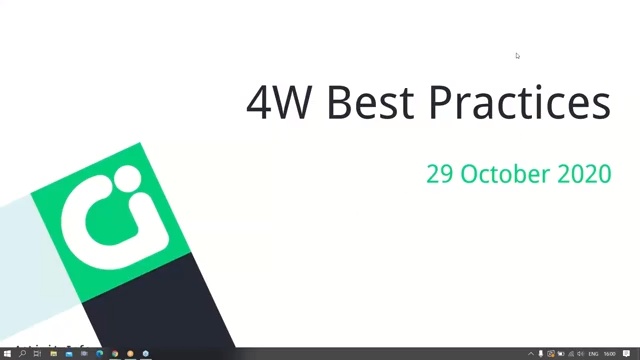
Get started with ActivityInfo and 4W activities.
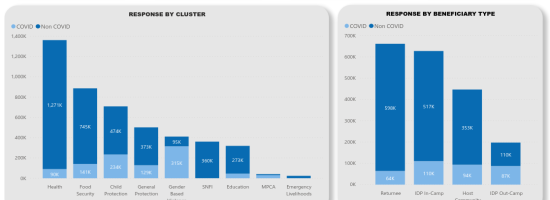
Every year, UNOCHA in Iraq shares the Iraq Humanitarian Dashboard, a dynamic dashboard that presents an overview of the Humanitarian Response in the country. From year to year the Humanitarian Dashboard is evolving using innovative techniques, leveraging the possibilities of the ActivityInfo API. In this article, we take a look at the new developments in the 2020 Iraq Humanitarian Dashboard.
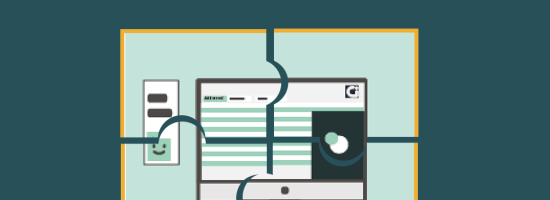
Collaborating on a common information management system (MIS) such as ActivityInfo makes it easy to collect data from various different sources and maintain a single, centralized source of truth. This article presents some ideas on how to win the support of other partner organizations and stakeholders so as to start working on a common tool.

In this blog post we are presenting the brand-new Database Audit Log, designed to give to Database owners even more control over the information managed in their Databases, enabling Record recovery and helping detect potential disruptive usage.

The use of ActivityInfo for Disaster Risk Management by AKAH,A and for the COVID-19 country response in partnership with the Ministry of Public Health.

The fast developments related to the COVID-19 pandemic have created brand-new data management needs worldwide. The amount of data coming in from various sources and the pressure for daily, updated numbers and reports create an additional challenge both for the reporting sides and for the governments that collect these data. In this blog post we explore the adoption of ActivityInfo as a data management platform for monitoring the COVID-19 response in the Islamic Republic of Afghanistan as a result of the partnership between the Aga Khan Agency for Habitat Afghanistan (AKAH,A) and the Ministry of Public Health in the country.

In this blog post we take a look at an interactive tool designed by the Information Management Working Group in Turkey which makes partner training and the provision of indicator guidance to new agencies and staff easier and quicker. We spoke with Mr. Levent Eksi, Associate Information Management Officer in UNHCR who explained to us why the IMWG decided to create this tool and how it has improved their work, the partners cooperation and the indicators quality.

The ActivityInfo team participates in the exploratory research project, QualMiner which focuses on the challenge of handling the unstructured information reported by humanitarian organizations for the Emergency Response.

In November 2018, UNICEF in the Democratic Republic of the Congo started using the software for monitoring activities related to the Ebola Response. We spoke with Mr. Ambroise Brou, Information Management Specialist for the Emergency situation in UNICEF DRC and Mr. Patrice Fillon, Information Management Specialist in the Ebola Response in UNICEF DRC who explained to us how ActivityInfo is used today by the organization and in particular in the Ebola Response.

Following the remarkable 2018 Iraq HRP Monitoring Dashboard, UNOCHA in Iraq released the "2019 Humanitarian Response Dashboard" which presents a comprehensive overview of the Humanitarian Response in the country. The Dashboard presents the Humanitarian Response regarding IDPs, returnees and affected host communities, under the HRP or other Non-HRP related activities in more than 800 locations, as well as the humanitarian presence of 111 partners.

UNHCR in Jordan was the first UNHCR field office to adopt ActivityInfo as a monitoring tool for the progress of the activities of the partners. ActivityInfo is being used up until today to track the progress of the activities and the objectives of each sector and each partner.

ActivityInfo was created in 2009 as a solution to the increasing demand on coordinating partners reporting. Sppn after, ActivityInfo became the tool of choice for the coordination of the Clusters in the Democratic Republic of the Congo, during that time.

Compiling internal training materials for your staff or external partners can give stakeholders the confidence to fully participate in a new system. In this blog post, we have collected a number of great examples on training materials from ActivityInfo users, together with a few tips and tricks from our own team.

Amar Sabah Nore from WHO Iraq presents on how the Health Cluster has improved information management with ActivityInfo.

Just a few days ago the ActivityInfo team visited Jordan to host a two-day User Conference on ActivityInfo. The purpose of the User Conference was for the team to meet some of the users of ActivityInfo and to get the chance to discuss with them the way they use ActivityInfo as a software for Monitoring and Evaluation, the expectations they have from the tool and the ways it can be improved to assist humanitarians in Planning, Coordination, Data Collection and Data Analysis and Reporting.

With ActivityInfo UNHCR in Yemen achieves real-time data analysis of up-to-date data and minimizes duplicate effort which is critical in information management.

Using ActivityInfo as a unified monitoring platform to control data collection and get an overview of activities in near real-time, UNICEF Lebanon along with its partners reduced the time needed for the synthesis of the final reports and improved the accuracy of the data collected.

Employing the features of ActivityInfo and with a quick training of their users, REACH in CAR decreased the time needed for data entry significantly. The monthly process of data collection turned into a weekly process as its complexity was eliminated. This helped in the coordination of their activities and the launch of alerts on emerging conflicts.
The WASH cluster in Mali uses ActivityInfo as a space where WASH cluster partners can enter communal, shared information and data about their activities on the ground. Partners use on-line forms to enter data directly into the central database. This information is immediately available to the Cluster Coordinator.